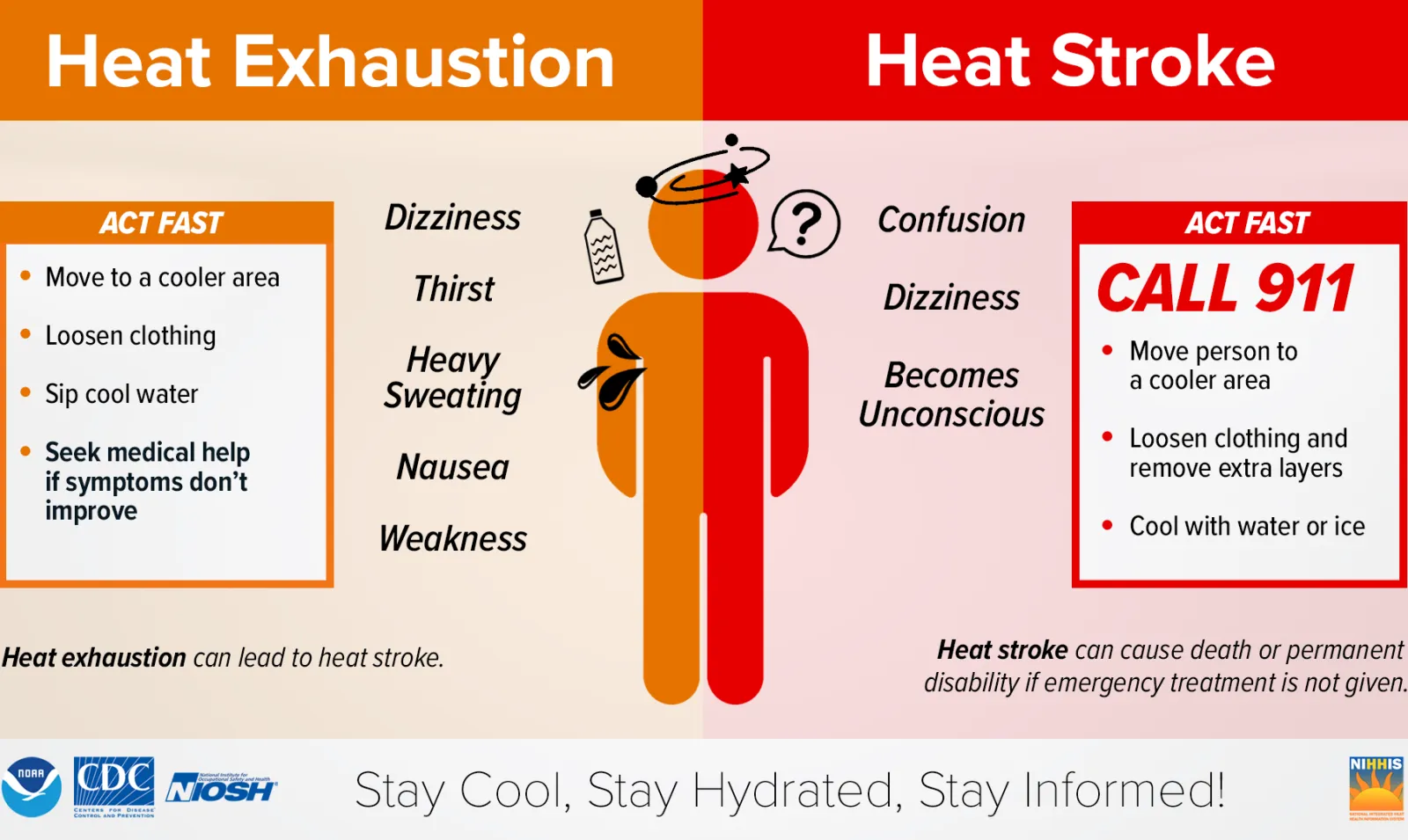As athletes begin to train during the hot summer months, it is essential to take necessary precautions to ensure their safety in the elements. Exercise related heat illnesses are among the most dangerous conditions in athletics across the nation. According to the CDC, it is a leading cause of death and disability among U.S. high school athletes. Our Certified Athletic Trainers here at Bluegrass Orthopaedics are among the nation's trained health care professionals prepared to handle situations such as these. While the schools we serve have the benefit of having an athletic trainer on site to provide care and supervision, it is important that this information be presented for anyone to be prepared for a heat related emergency.
Heat illness refers to various conditions that a person may experience from exertion or exercise in hot temperatures. Heat Illness Symptoms may include:
- Dry mouth
- Cramps
- Thirst
- Chills
- Irritability
- Nausea
- Headache
- Vomiting
- Weakness
- Pale or Flushed Skin
- Dizziness
- Excessive Fatigue
- Altered Vision

Any of these symptoms should be taken seriously and treated immediately in order to prevent progression of a heat related condition. There are various typical exercise-related heat illness conditions that, while separate, are related.
- Exercise-associated muscle cramps are often a result of dehydration. These consist of sudden, painful muscle spasms caused by exertion. Anyone experiencing muscle cramps should rest to cool down, consume salty foods or concentrated liquids (i.e. electrolyte beverage such as Gatorade with salt added, pickle juice), continue to move and use the affected muscle group with stretching and massage, and discontinue strenuous activity. If cramps do not improve with treatment, seek medical treatment.
- Heat exhaustion is the inability to exercise effectively in the heat. This may be secondary to a combination of factors such as hypoglycemia and energy depletion among others. This condition is usually identifiable by elevated body temperature (98.6-104° F), heavy sweating, and signs of dehydration. Once signs of heat exhaustion have been identified, athletes should be moved to a cool space and/or use cold ice towels. They should rest on their back with their legs elevated, remove any unnecessary clothing and equipment, and drink cool fluids. Athletes who experience heat exhaustion should refrain from activity for the remainder of the day. It may also be beneficial to go through acclimatization before fully returning to activity.
- Exertional heat stroke is the most severe of these conditions. EHS is defined as a high body temperature (above 104° F) in addition to central nervous system dysfunction such as collapse, confusion, or altered consciousness. EHS is a medical emergency that, if untreated, can cause multi-organ system failure, long-term complications, and even death. It is important that signs and symptoms of heat stroke be quickly recognized and aggressively treated. When treating an athlete suffering from EHS, they should be cooled first and then treated. In an environment such as team practices, there should always be a cold tub or area where any athletes experiencing heat illness can be placed for immediate cooling.
In this case, the athlete's entire body should be immersed in ice and water. Rectal temperature should be monitored, and the athlete should remain in cooling environment until rectal temperature is 102° F or lower. Once this is accomplished, they should be transported for further emergency medical treatment. In the case of any of these conditions, signs should not be taken lightly and should be treated aggressively in order to prevent further complications. It is important that anyone participating in exercise in a hot environment be able to recognize heat illness symptoms and know how to properly treat them. It is especially critical for athletes in high-exertion sports, such as football, to be monitored by a Certified Athletic Trainer who is trained to handle emergency situations such as these.
Finally, it is imperative for all members of an athletic program to know how to prevent, recognize, and treat heat illness. The Korey Stringer Institute has committed to helping implement Heat-Illness Reduction Programs in order to prepare athletic programs across the nation for these emergencies. Components of these programs include:
- Pre-participation physical exams - all athletes should be required to undergo screenings for any underlying conditions that could make them more susceptible to complications of heat illness.
- Recognizing symptoms - all members of an athletic program should be trained to recognize the signs and symptoms of heat illness and should know proper treatment for any of these conditions.
- Acclimatization - studies show that heat illness occurs with increased frequency throughout the first 7-14 days of practices. Athletes should be acclimated to weather, workouts, and new equipment over a two week period.
- Hydration - athletes should be trained and educated on proper hydration and nutrition. They should drink approximately 64 ounces of water daily, as well as every 15-20 minutes during practice or competition. Both dehydration and overhydration can lead to heat illness. Signs of these can be dark urine or rapid weight loss/gain during exercise.
- Preparation - access to proper supplies such as a heat stress monitor, thermometer, and cold water immersion tub are necessary to provide proper treatment of heat illness.
- Emergency Action Plan - this should be implemented and rehearsed annually (at minimum) to ensure that all athletic programs are prepared to handle a heat related emergency.
More information on heat illness can be found on the CDC Website and the Korey Stringer Institute.
About the Author:

